The perfect way to celebrate the 100th birthday of Kirk Douglas? Animation, of course.
The post In Honor of Kirk Douglas’ 100th Birthday, Here’s the Greatest Animated Short Ever Made About Kirk Douglas appeared first on Cartoon Brew.
Add a Comment
The perfect way to celebrate the 100th birthday of Kirk Douglas? Animation, of course.
The post In Honor of Kirk Douglas’ 100th Birthday, Here’s the Greatest Animated Short Ever Made About Kirk Douglas appeared first on Cartoon Brew.
Add a Comment
The biggest collection of material ever from the production of the seminal Disney film 'Pinocchio' is currently on display in San Francisco.
The post In Conversation: John Canemaker On The Disney Family Museum’s Massive ‘Pinocchio’ Exhibit appeared first on Cartoon Brew.
Add a Comment
The Disney studio in 1956—in glorious color!
The post 15 Rare Color Photos Of Walt Disney And Artists You Probably Haven’t Seen Before appeared first on Cartoon Brew.
Add a CommentThese rare videos document the presentation of the animated short Oscar from 1949 through 2013.
Add a CommentThe story of Louis Zamperini, hero of Angelina Jolie's "Unbroken," seems far removed from anything animation-related, but he did have a significant, and previously untold, connection to the animation world.
Add a CommentThough the work that animators create is often exhilarating, the actual process of animating, which involves sitting at a desk for hours at a time, is not particularly interesting to the general public. In the past, when studio publicity departments were tasked with creating publicity stills of animators, they often posed animators making an expression in front of their mirror while drawing a character with a similar expression. The mirror, it turns out, was not just useful to the animator’s own process but also to the photographer who wanted to compose a dynamic image of the animator at work. It never occurred to me what a common motif this was until I collected a few of them on Instagram a few days ago. Looking at more recent publicity shots of 2D animators, especially from the 1980s and ’90s, the animator-making-an-expression-in-a-mirror publicity shot was largely phased out in favor of a more generic pose of an animator drawing at a desk, looking at the camera while drawing and flipping, or the unnatural pose of holding a maquette while drawing. Enjoy this collection of legendary animators hard at work creating some classic characters:
Add a Comment"The Who, the What, and the When" is a new book by Jenny Volvovski, Julia Rothman and Matt Lamothe that celebrates the "secret sidekicks of history" who helped famous people achieve their goals.
Add a CommentIt's perhaps a mixed blessing that the only public personality who talks frequently about Walt Disney nowadays is the right-wing political commentator/conspiracy theorist Glenn Beck.
Add a CommentDon Bluth smiled at me. "I wouldn't worry about being laid off from Disney's, Steve. Nobody gets laid off around here. When somebody messes up, the studio just sends them to WED."
Add a CommentBefore I got hired at Disney Features, I sold a few magazine articles and developed a love of writing for print, where there was nothing between writer and reader but words on a page. When I became a Disney employee, I realized I was surrounded by animation veterans with vivid memories of the rambunctious days at the old Hyperion studio, and the creative struggles that went into making "Snow White," "Pinocchio," and the other early features. Talking to older Mouse House staffers, it dawned on me they could provide great source material for articles.
Add a CommentI was back in Don Duckwall's office, exchanging insincere smiles with him. I had been on "The Fox and the Hound" with Larry, Woolie, and everybody else for half a year. But now Don wanted me to go on another assignment.
Add a CommentLarry had me writing sequence scripts for "The Fox and the Hound," which turned out to be my assignment for the next six months. Part of the package was attending Woolie Reitherman's marathon story sessions, which often left me drained and dazed. There were also Woolie's marathon take-selection meetings, which left me drained and bewildered.
Add a CommentBelieve it or not, one of the best online sources for animation history buffs is YouTube. Amazing and rare materials, often digitized from private film collections, is posted regularly on the streaming site. You just have to know where to look.
Add a CommentRowland Emett, one of the greatest British cartoonists of the previous century yet mostly forgotten today, is finally getting his due. The Birmingham Museum in England will open "Marvellous Machines: The Wonderful World of Rowland Emett" on May 10.
Add a CommentHappy Centennial, Ward Kimball! March 4, 1914—March 4, 2014 It’s been quite a century. Celebrate Ward’s legacy: TumblrFacebookTwitter Your contributions to the art of animation won’t be forgotten anytime soon!
Add a Comment
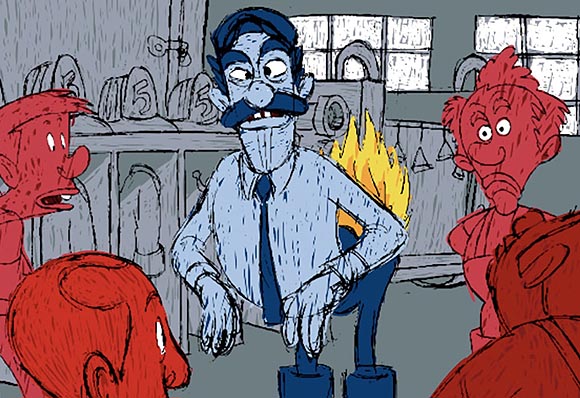
Steve Moore, the director of Disney’s rarely seen Oscar-nominated short Redux Riding Hood as well as The Indescribable Nth, has completed a new short called Chief, Your Butt’s On Fire.
The fifteen-second trailer posted online put a smile on my face. Maybe that’s because Steve used Ward Kimball’s Firehouse Five Plus Two as his soundtrack. He wrote a lengthy blogpost about the production of his film on the FLIP Animation blog that he co-authors. Moore is planning to screen the film on the festival circuit.
Add a Comment

This series of never-before-published photos was taken at the 1945 wrap party for Walt Disney’s Latin American-themed package feature The Three Caballeros. In addition to photos of Walt and Lillian Disney, there are images of some of Disney’s top artists including Mary Blair, Fred Moore, Ward Kimball, Retta Scott, and James Bodrero. Jose Carioca’s voice, José Oliveira, is in one of the images, and soon-to-become children’s book author Roald Dahl (Charlie and the Chocolate Factory, Matilda) is seen in another. Also pictured is the studio’s well-liked head of personnel, Hal Adelquist, who later ended up panhandling in the Bowery.












 Add a Comment
Add a Comment
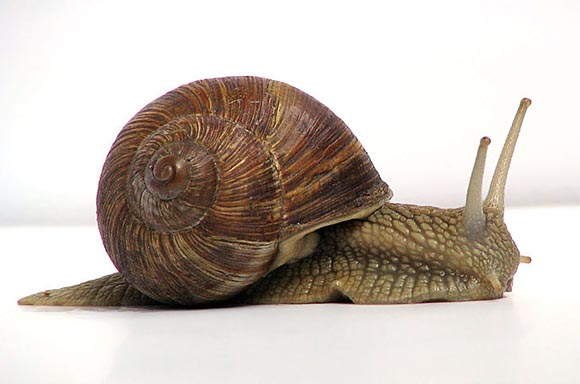
Flawed film premises weren’t invented in the last decade. In 1977, a gentleman named Lorenzo Music was developing an animated feature called Simon and Miranda, which starred a snail named Simon and his love interest, Miranda the caterpillar. Music had successfully developed and produced snail-free TV shows like The Bob Newhart Show and Rhoda, and needed advice if his latest idea was worthwhile.
For guidance, Music reached out to Ward Kimball, who had spent nearly forty years as a director, writer and animator at Disney, and had excellent instincts about entertainment. Kimball, of course, was also responsible for creating the most successful insect in animation history—Pinocchio’ Jiminy Cricket—and though snails aren’t technically insects, for Music’s purposes, they were close enough.
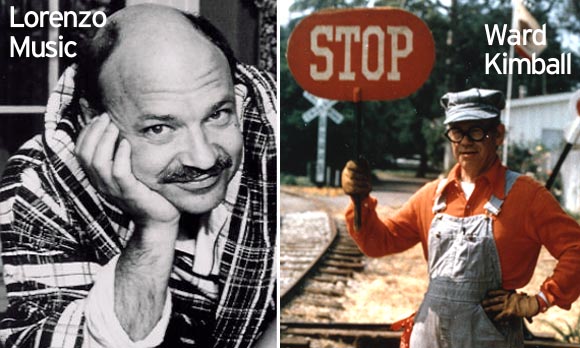
Music sent the script he’d developed to Ward Kimball through a mutual friend, John Gibbons. Ward was unimpressed. Or to put it more bluntly, he thought it was a plain awful concept. Never once to mince words, Ward ripped apart Music’s idea in acerbic fashion with an extended riff on why Americans don’t like snails. He ended with a warning to Lorenzo to spend his money on “something besides snails.” Printed for the first time ever is Ward’s letter to Lorenzo Music:
Lorenzo Music was a smart man. He took Ward’s advice to heart, and the world was momentarily spared from having to endure an entire animated feature starring a snail. Music’s response to Ward is recorded below. Music set aside his hard-shelled dreams and went on to perform numerous voices in animated cartoons including Ralph the All-Purpose Animal in Twice Upon a Time, Tummi Gummi in Gummi Bears, and his most memorable role as Garfield.
Add a Comment

Dark Horse Comics announced this week the launch of the newly formed Kitchen Sink Books imprint. The venture will begin publishing books in late-2013, with a focus on large-format art books, archival reprint collections, and original graphic novels. If the name of the imprint sounds familiar, that’s because it’s headed by alternative publishing pioneer Denis Kitchen who ran Kitchen Sink Press between 1969 and 1998. His partner in the new venture is book designer/editor John Lind, with whom he had previously run Kitchen, Lind & Associates.
I discovered John’s work as one of the designers of the fantastic coffeetable book The Art of Harvey Kurtzman: The Mad Genius of Comics, which was co-written by Kitchen. The book impressed me so much that I contacted him to ask if he would be the designer of my Ward Kimball biography. He agreed and Chronicle hired him for the project. John set up a beautiful layout for the book, and while his work on it will sadly never see the light of day, it was a rewarding experience personally to work with someone so talented at what they do.
Both John and Denis have a great aesthetic eye, and hooking up with Dark Horse sounds like a perfect match, both for them and comic fans. “John and I have packaged books for a number of first-rank publishers, but we have long discussed the ideal house to enjoy maximum freedom and creativity,” says Kitchen. “In longtime friend and publisher Mike Richardson and Dark Horse Comics, we found just that. It’s a kinship born of creator-friendly environments, a commitment to upholding comics history, and beautiful books produced by talented creators that we can be proud of.”
Kitchen Sink Books will initially release four to six books per year, beginning this November with The Best of Comix Book: When Marvel Went Underground!, which is:
A collection of the long-out-of-print underground Comix Book series (1974–1976) that was originally edited by Denis Kitchen and Stan Lee for Marvel Comics. The collection will include work from underground creators such as Joel Beck, Kim Deitch, Justin Green, Harvey Pekar, Trina Robbins, Art Spiegelman, Skip Williamson, and S. Clay Wilson. The book will feature an introduction by Lee, a foreword by Kitchen, and an essay written by James Vance (Kings in Disguise), accompanied by unpublished artwork, photographs, and correspondence from Kitchen’s archives.
A preview of the book’s contents can be seen on BleedingCool.com.
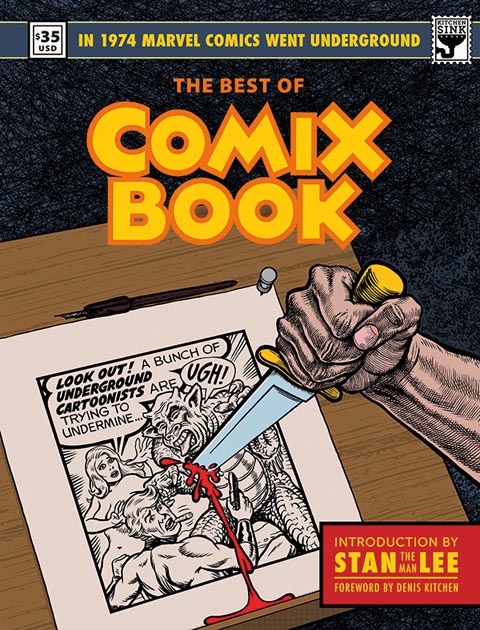
We uncovered lots of fascinating pieces of Disney history while working on Ward Kimball’s biography—you know, the one that the Disney Company’s lawyers won’t allow you to see. Among the discoveries were film reels of Ward’s home movies, which I can report are a fair deal more interesting than the average person’s home movies.
We transferred those reels, and with permission, I’m sharing a rarely seen piece of movie footage shot by Ward. Tomorrow, it will be exactly 65 years since this film was recorded (April 4, 1948). In it, Ward and Walt Disney visit the home of Dick Jackson, a wealthy businessman who operated a scale-railroad in the backyard of his Beverly Hills home.
Kimball had been a close friend of Jackson’s for years, and often dropped by for steamups. A little over six years earlier—December 7, 1941, to be exact—as he was driving to Jackson’s for a steamup, he heard on the radio that Pearl Harbor had been bombed. The news unsettled him momentarily, but he “forgot it all with Jackson’s locomotive,” he wrote in his journal. Backyard railroading had the magical effect of allowing people to put the real world on pause, even if only for a few hours at a time.
In spring 1948, Ward had become aware of Disney’s budding interest in scale-model trains, and he invited Walt to come along to Jackson’s place for an afternoon of scale railroading. This is, I believe, the first time that Walt had ever personally operated scale-trains. Walt was hooked after the visit, and soon after he began constructing his own luxe backyard railroad, the Carolwood Pacific.
Kimball’s unusually close relationship with Disney allowed him to capture these unguarded moments of his mercurial boss. Disney appears to be enjoying every hunched-over second of the railroading experience, and he takes the time to acknowledge Ward’s camera on multiple occasions. Ward wrote about the day’s events in his private journal:
Sunday, April 4, 1948
Up with bright sun. Kids helped me put nitrogen around orange trees. If they didn’t, no Jackson train ride. Damp grass. At 12:45 left for Jacksons in Beverly Hills. 1st over there. He started the Colorado Central. Steam up at 2:00. Walt Disney arrived soon after. Got a big kick out of it all. We showed him the works. He couldn’t quite believe that it was all scale! He tried it out—got scared when drivers spin. “What the hell was that!” he’d ask me. He had lots of fun. We all took movies and Jackson took stills. Showed Walt Jackson’s shop. Kids rode and played “Train Robbers.” Home at 5:30. Broiled corn beef over fire place.
The original film is silent so I added some music—of course, Kimball’s band The Firehouse Five Plus Two. Below are identifications of the people in the film, including Ward’s wife Betty and their three children:
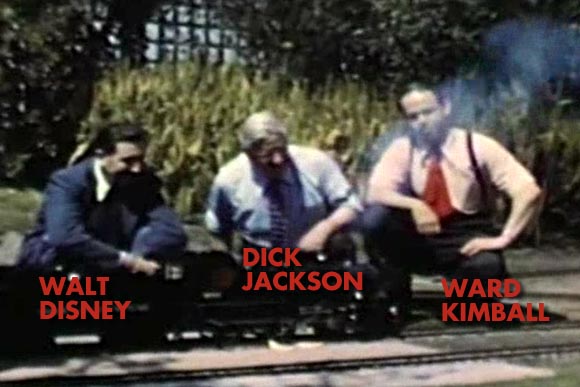
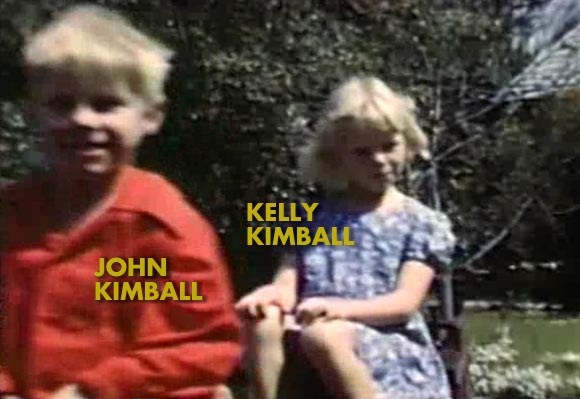
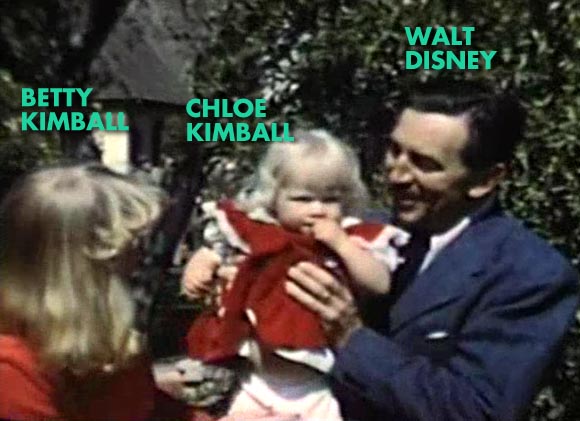
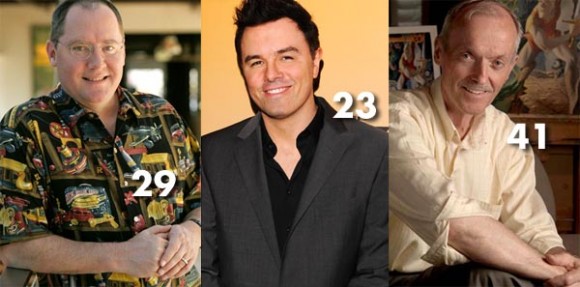
“Animation is a young man’s game,” Chuck Jones once said. There’s no question that animation is a labor-intensive art that requires mass quantities of energy and time. While it’s true that the majority of animation directors have directed a film by the age of 30, there are also a number of well known directors who started their careers later.
Directors like Pete Docter, John Kricfalusi and Bill Plympton didn’t begin directing films until they were in their 30s. Don Bluth, Winsor McCay and Frederic Back were late bloomers who embarked on directorial careers while in their 40s. Pioneering animator Emile Cohl didn’t make his first animated film, Fantasmagorie (1908), until he was 51 years old. Of course, that wasn’t just Cohl’s first film, but it is also considered by most historians to be the first true animated cartoon that anyone ever made.
Here is a cross-selection of 30 animation directors, past and present, and the age they were when their first professional film was released to the public.
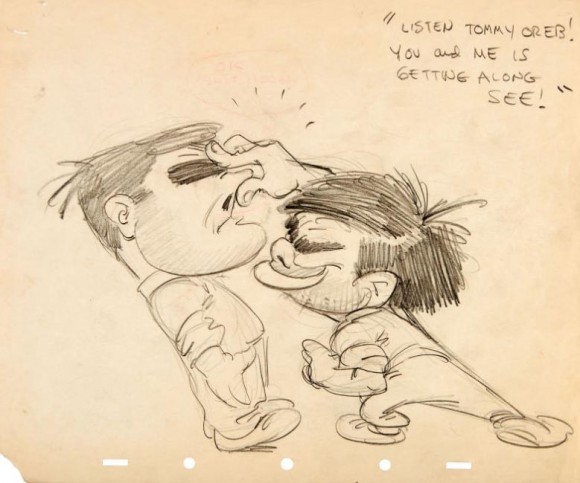
Tom Oreb is recognized by many as being one of the finest character designers during the Golden Age of Hollywood animation. Certainly, he was one of the most versatile. At Disney alone, he was the primary designer (or character stylist) of Toot Whistle Plunk and Boom, Sleeping Beauty, Paul Bunyan and 101 Dalmatians, among others. He also designed Tex Avery’s Symphony in Slang, Destination Earth for John Sutherland Productions, and the infamous “stylized Mickey” for Disney’s TV commercial unit:
Earlier in his career, Oreb had been one of Ward Kimball’s primary assistants on Jiminy Cricket in Pinocchio, Bacchus in Fantasia and the crows in Dumbo. A stash of his drawings from this era (1939-1941) recently turned up on the Hakes auction site. The drawings had belonged to Oreb’s first wife, Bonnie Barrett, who unbeknownst to all, had been alive until recently.
Because many of these drawings were done for his wife, they hint at their marital spats, albeit in humorous fashion. Another series of drawings alludes to Oreb’s love of surfing and beach bumming at Newport Harbor and Laguna Beach in Orange County, California. One drawing features a guest appearance by Salvador Dali, and another shows Oreb with his gruff supervisor Ward Kimball.















 Add a Comment
Add a Comment